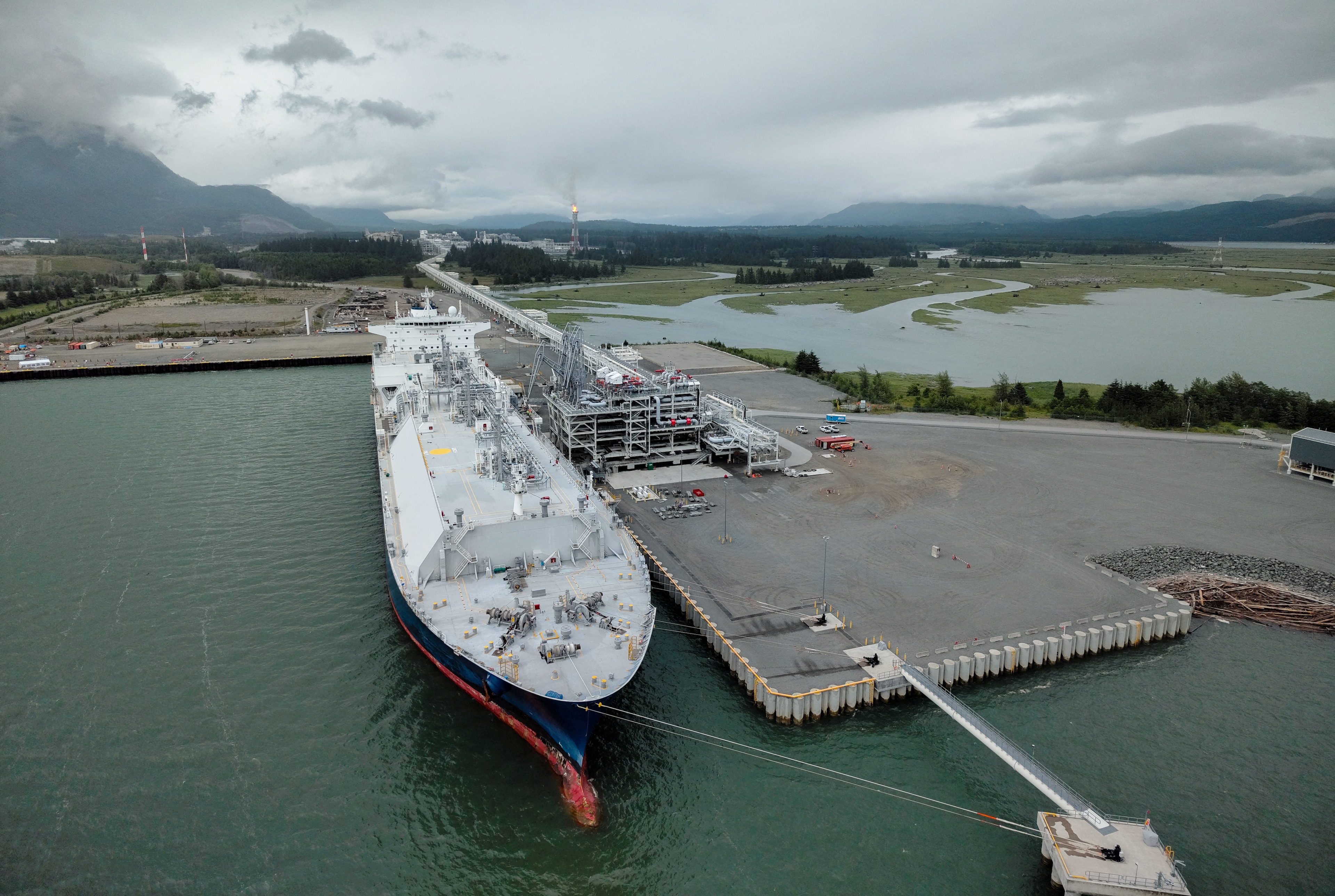IEA roadmap outlines immediate steps oil and gas industry must take to cut emissions

The emissions intensity of oil and gas activities must be halved by 2030, according to the IEA.
Image: Unsplash/zburival
Stay up to date:
Oil and Gas
Listen to the article
- A new IEA report outlines a roadmap for oil and gas companies to reduce their emissions in line with the Net Zero Emissions by 2050 Scenario.
- The roadmap recommends five areas where immediate action is needed to meet emissions-reduction targets.
- Solutions include avoiding methane leaks, preventing non-essential flaring and electrifying key parts of upstream oil and gas operations.
More than a third of global energy will be generated by renewable capacity by 2025, but energy-related CO2 emissions continue to increase, up 0.9% in 2022.
Global production, transportation and processing of oil and gas emitted the equivalent of 5.1 billion tonnes of CO2 in 2022, according to the International Energy Agency (IEA). That’s almost 15% of total energy-related greenhouse gas emissions.
Under the IEA’s Net Zero by 2050 (NZE) scenario, the emissions intensity of oil and gas activities needs to be roughly halved by the end of this decade, leading to a 60% overall reduction in total emissions from oil and gas operations.

A new IEA report, Emissions from Oil and Gas Operations in Net Zero Transitions, outlines a roadmap of key steps oil and gas majors must take for this to happen. The roadmap recommends five areas where immediate investment is needed to meet emissions-reduction targets.
1. Tackling methane emissions
Detecting and fixing leaks to reduce methane emissions can make the biggest contribution to reducing overall greenhouse gas emissions, the report states.
Methane accounts for about 30% of global warming since the Industrial Revolution and under the NZE scenario, current methane emissions must see a 75% reduction by 2030.
While around a third of this reduction should happen naturally as consumers switch from fossil fuels to cleaner forms of energy, oil and gas companies will need to make widespread efforts to clean up their supply chains to achieve a similar methane intensity to the world’s best operators today.
Established technologies are available to achieve this, including leak detection and repair campaigns, installing emissions control systems and replacing components designed to emit methane. Satellite detection and other advanced monitoring technologies could also make methane emitters more accountable.
2. Eliminating all non-emergency flaring
Flaring is the practice of combusting excess natural gas used by gas operators to depressurize their equipment and manage unpredictable and sizeable pressure variations. It’s also a means of getting rid of unwanted gas from oil production, rather than investing in the infrastructure needed to capture, transport, process and sell it.
While some essential flaring is needed for safety reasons, flares that operate and emit CO2 on a near-continual basis account for more than two-thirds of all flared gas.
Alternatives to non-essential flaring include investing in the infrastructure needed to bring it to consumers, or reinjecting it to support reservoir pressure. Natural gas can also be compressed into CNG or into liquid form as LNG, which can then be used as combustible fuel for power generation at sites fitted with carbon capture, utilization and storage technology (CCUS).

3. Electrifying upstream facilities with low-emissions electricity
Alongside the greenhouse gas emissions generated by combustion of fossil fuels like oil and natural gas, are those generated by the drilling rigs, pumps, compressors and other equipment needed to extract and process these fuels.
The heat and energy needed to power upstream processes in the oil and gas industry resulted in more than 700 Mt of CO2 in 2022, according to the IEA report. Electrifying many of these operations could halve this figure.
Much of the electricity needed to power the industry’s upstream operations relies upon small-scale, on-site natural gas generators, which use relatively inefficient open-cycle turbines. Switching to combined-cycle turbines could reduce the energy needed to power them by around 30%.
However, fully electrifying many of these upstream operations could result in even greater emission reductions. More than half of global oil and gas production takes place within 10 kilometres of an electricity power grid and three-quarters takes place in areas suitable for efficient wind or solar installations, the IEA notes.

4. Equipping oil and gas processes with carbon capture, utilization and storage
The oil and gas industry leads the world in CCUS deployment, accounting for around 90% of all projects and 40% of CCUS investment since 2010, according to the report. Applying CCUS technology along the oil and gas supply chain could significantly reduce emissions.
Operations like gas processing, refining and LNG liquefaction are highly concentrated sources of CO2 emissions, which are often located close to existing oil and gas activities.
In the NZE Scenario, the global capture capacity of these three processes increases more than six-fold by the end of the decade. This will require an investment of around $100 billion by 2030, mostly for capital goods and infrastructure.
5. Expanding the use of low-emissions hydrogen in refineries
While generating low-carbon hydrogen using electrolysis powered by renewables could have limited scope to reduce oil and gas industry emissions in the short term, the technology could prove highly effective over the longer term.
Hydrogen is particularly suited for use in refinery operations, as it requires little new-user equipment, can often be co-located with other industrial hydrogen offtakers, and is often in locations suitable for renewables’ deployment. These are typically coastal areas that can be phased into future plans for hydrogen import and export hubs, the report states.
By 2030, refineries could produce on-site 65% of the 6 Mt of low-emissions electrolysis hydrogen outlined in the NZE Scenario. The projected $80 billion bill for capital equipment, operational costs and purchase of low-emissions hydrogen from external suppliers to achieve this would reduce costs and risks for other projects linked to new sources of hydrogen demand.

While the bill for cutting emissions in line with the NZE Scenario runs to $600 billion this decade, inactivity by industry majors will cost a great deal more in the long term if climate change is left unchecked.
Many of the actions are aimed at boosting efficiency and plugging leaks, which should quickly compensate for upfront investment, according to the report.
Using methane as an example, the IEA estimates that $75 billion in capital expenditure is required between 2022 and the end of the decade to realize the emissions reductions needed under the NZE scenario. This makes measures to curb methane emissions among the least costly fixes that can significantly reduce global greenhouse gas emissions.
The World Economic Forum’s Fostering Effective Energy Transition 2022 report, stresses both the importance, and the challenges, of energy transformation for industrial sectors. It highlights the need for innovative partnerships between different stakeholders to bring about a step change in collaborative activity that can unlock a route to net-zero emissions.
Within the industry, the Oil and Gas Climate Initiative (OGCI) drives collaborative climate action for oil and gas companies. The OGCI’s aims encompass many of the IEA report’s recommendations for reducing emissions, including: striving to reduce methane intensity of oil and gas operations; working to reduce methane emissions to near zero from flaring associated with operated oil and gas assets by 2030; and supporting a wide range of low-carbon solutions to decarbonize industry operations.
What's the World Economic Forum doing about the transition to clean energy?
Bjorn Otto Sverdrup, chair of the OGCI's executive committee, believes “action is now more important than talk. Reducing methane emissions from the oil and gas industry is of particular importance towards 2030, and it has been a priority for OGCI. Collectively, our members have reduced methane emissions by 40% since 2017, and cut upstream flaring by a third”.
He acknowledges it’s an industry-wide challenge, as “half of the oil and gas industry’s direct emissions come from methane and amount to 2 GtCO2e a year, or about 5% of global emissions”. The OGCI launched the Aiming For Zero Methane Emissions initiative last year to help meet global reduction targets.
“Eliminating these oil and gas methane emissions would meet more than two-thirds of the Global Methane Pledge target to reduce methane emissions by more than 100 million tonnes of methane across all sectors by 2030 … Carbon capture utilization and storage, decarbonizing transportation and reducing emissions as quickly as we can should be priorities for the industry as a whole”.
Despite this alignment on objectives – and while the companies responsible for around half of current oil and gas production have committed to cutting emissions – more must be done to achieve reductions on the scale needed to prevent the future threat of climate crisis on the planet.
Accept our marketing cookies to access this content.
These cookies are currently disabled in your browser.
Don't miss any update on this topic
Create a free account and access your personalized content collection with our latest publications and analyses.
License and Republishing
World Economic Forum articles may be republished in accordance with the Creative Commons Attribution-NonCommercial-NoDerivatives 4.0 International Public License, and in accordance with our Terms of Use.
The views expressed in this article are those of the author alone and not the World Economic Forum.
Related topics:
Forum Stories newsletter
Bringing you weekly curated insights and analysis on the global issues that matter.
More on Energy TransitionSee all
Ayla Majid
July 24, 2025
Manikanta Naik and Murali Subramanian
July 23, 2025
Arunabha Ghosh and Jane Nelson
July 22, 2025
Ali Alwaleed Al-Thani and Santiago Banales
July 21, 2025
Goodness Esom
July 18, 2025





